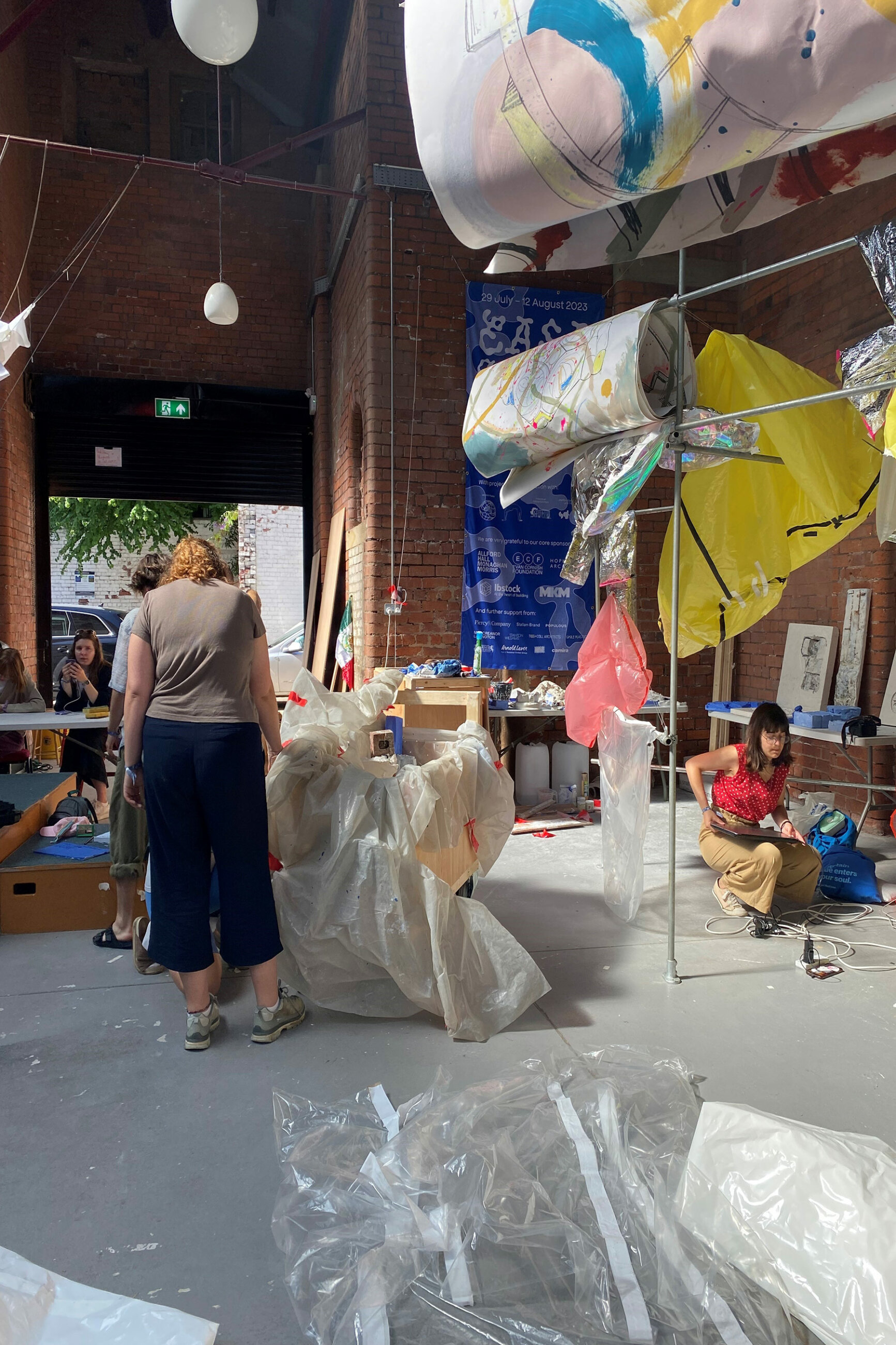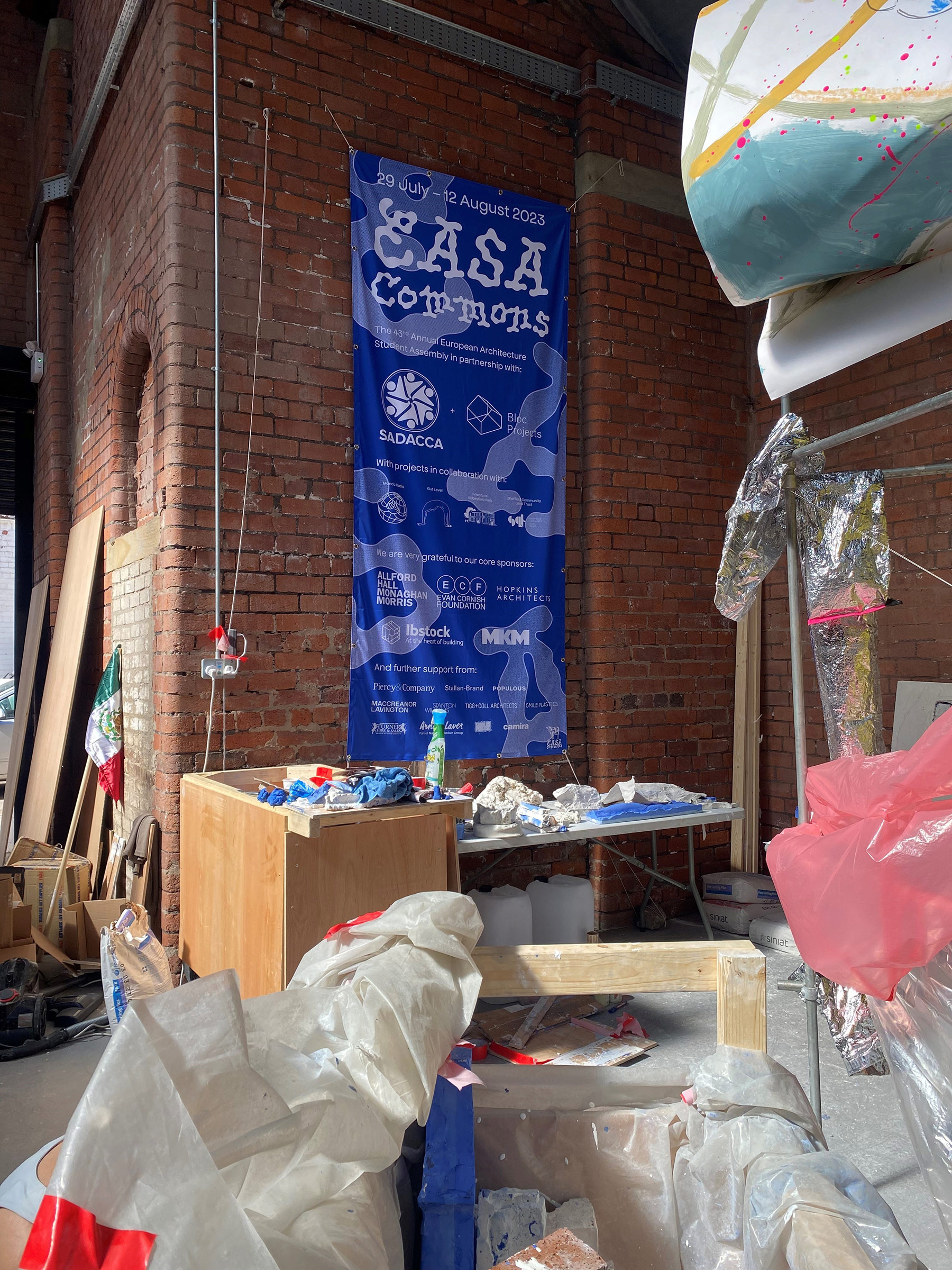Rethinking traditional architectural education through direct engagement at EASA
EASA (The European Architecture Students Assembly) visited the UK this summer for the first time since 2010, and seasoned participant Natalia Malejka was there.
Tell us about EASA?
EASA (European Architecture Students Assembly) is Europe’s longest-running decentralised network of architecture students and young designers. It started in 1981 in Liverpool as a one off gathering for students who wanted to rethink traditional architectural education through direct engagement with their context.
The main event is a two-week summer assembly of about 500 students from all over Europe, during which the EASAians form a self-maintaining community that study, work, rest, cook, eat, clean, party and act together. Whilst participating in one of about 30 workshops, the students take learning into their own hands – raising questions and investigating ideas, discovering territories and cultures and sharing knowledge.
What has your involvement been?
I have been involved since 2016, when I was chosen as a participant to go to Lithuania whilst studying at an Architecture School in Glasgow. I’ve since taken over the role of the Scottish National Contact and for 4 years assisted EASA by promoting the event throughout the Scottish Architecture schools.
Beyond that I have benefited from participating in several experimental design, construction, and theoretical workshops over the years, being able to get hands-on experience with materials such as timber, concrete, metal and engage with local contexts all over Europe.
Any highlights?
My main highlight is always the people and community you meet, all with similar interests but with different ideas and backgrounds. Organised by students and for students, the sleeping and living arrangements are usually also quite special. Every year is completely different, and I’ve slept in an abandoned ex-Soviet hotel in Lithuania, a circus tent, a vacant timber warehouse in a City port in Croatia, camped in a Swiss ex-army tent, a bunk bed in a night-club and being hosted in private homes by a community in a tiny village in Macedonia.
How has being a part of the event helped you as an architect?
The bottom-up non-hierarchical structure of EASA means that every decision taken about EASA’s future requires a unanimous vote. This is not always the easiest thing to achieve among hundreds of students with different cultural, social, and political motivations. The debates often go into the early hours but somehow a consensus is always reached (and feels amazing when it happens!). I think a key takeaway that I have carried through into my professional work is the importance of communication skills, respect and awareness of our duties as Architects towards communities and society.
What was this year in Sheffield like?
This summer had a theme of ‘Commons’, exploring alternative land ownership within architecture in the context of the post-industrial Sheffield. This year’s EASA was unique in a way that every workshop partnered with a local community group – utilising the resources, skills, and power of 500 young architects and designers to develop projects impacting real communities.
This year, we created a transportable stage for a local radio station, a brick pizza oven in a local park, a modular sound system for a community group, a large-scale tapestry mapping Sheffield’s land ownership, a series of cast models documenting Sheffield’s textures and traces, a new public garden intervention, and many more.
Would you recommend it to others?
Absolutely, next year’s EASA summer assembly will be hosted by Spain under the theme of ‘Shānzhài’. ‘Shānzhài’’ referring to counterfeit products and the subculture surrounding them. In Architecture and the Arts, Shānzhài is understood as a grassroots social and cultural collaborative process that challenges and deconstructs mainstream notions of authenticity, and authorship, using systematic copying as a democratising tool. An exciting one as it will be set in a peculiar architectural setting like Benidorm.
How important is it for young architects to get out and involved in things like this?
EASA offers an alternative and supplementary education to the linear academic path to becoming an Architect and gives participants the opportunity to challenge the way in which we learn and practice. The assembly doesn’t help young designers become architects in the traditional sense but creates a safe space that teaches you to question, and challenge established notions.
For more information – https://www.easanetwork.org/
If you study in England, follow @easaengland on Instagram and look out for their participant call (usually around March/April).

